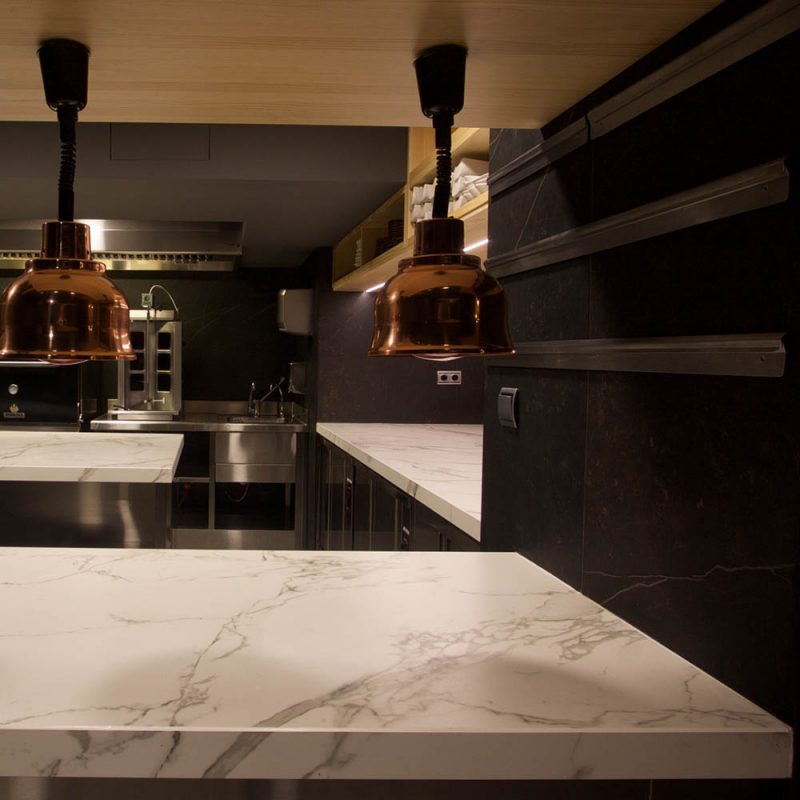Ever been captivated by the sheen and grandeur of marble? That enthralling piece in your home didn’t just appear magically; it underwent an extraordinary journey. The Journey of a Marble Slab: From Quarry to Your Home

This article may interest you Marble or Granite for kitchen countertops
The Origins of Marble
Geological Formation
Marble is formed deep under the Earth’s surface through a process called metamorphism. When limestone is subjected to extreme pressure and temperature, it gradually transforms into marble. The unique patterns and colors are due to the mineral impurities found in the original limestone.
Different Types of Marble
Marble comes in a wide range of colors and patterns, each with its own unique aesthetic and chemical properties. From Carrara to Calacatta and beyond, there’s likely a marble that perfectly suits your home’s décor.
The Quarry Experience
Locating the Right Quarry
Quarries are specialized locations where marble is extracted. The choice of quarry affects not only the quality of the marble but also its aesthetic attributes. Quality marble often comes from countries like Italy, Greece, and Turkey.
Extraction Methods
Mining marble isn’t like picking pebbles off the beach. It’s an intricate process that involves wire saws, diamond-tipped drills, and even explosives. Safety regulations are also stringent, given the risky nature of the work involved.
Marble Grading
How is Marble Graded?
Once extracted, the marble slabs are graded based on factors like purity, color consistency, and veining. Grading ensures that the consumer receives a product that meets certain quality standards.
Importance of Grading
The grade of the marble affects everything from how it should be handled to its final retail price. Higher-grade marbles are often used in artistic installations and high-end home furnishings.
Initial Shaping and Cutting
The Raw Cut
Once a marble slab is graded, it is initially shaped and cut to prepare for further refinement. This often involves removing impurities and trimming the slab to a manageable size.
Safety Measures
Cutting marble can be a hazardous job, requiring specialized safety equipment like respirators and heavy-duty gloves. It’s imperative for the workers to adhere to safety regulations to ensure a risk-free environment.
Transporting Marble
Logistics
Moving marble slabs from the quarry to a processing facility and then to your home is a logistic feat in itself. Special trucks equipped with cranes are often used for this purpose.
Special Care in Transit
Marble is both heavy and fragile, requiring special handling during transportation. Slabs are often laid flat and secured to prevent any breakage or cracks during the journey.
Marble Refinement
Polishing
Once at the processing facility, the marble undergoes several rounds of polishing to bring out its natural sheen. Various grades of abrasive pads are used in this polishing process.
Additional Treatments
Some marble slabs receive additional treatments like honing or sealing to provide extra durability or a different finish according to customer requirements.
Applications in Your Home
Kitchen Countertops
One of the most popular uses of marble in homes is as kitchen countertops. The high-grade, polished slabs are not just beautiful but also quite durable, although they require proper care to maintain their luster.
Marble Flooring
Another frequent application of marble is in flooring. A marble floor can add a sense of luxury and sophistication to any room but does require a good deal of maintenance.
Caring for Marble
Routine Maintenance
Marble surfaces should be regularly cleaned with a mild detergent and a soft cloth. Harsh chemicals can erode the marble, diminishing its natural beauty.
Dealing with Scratches and Cracks
Accidents happen. If your marble surface does suffer from scratches or cracks, there are professional services available that specialize in marble repair.
The Journey of a Marble Slab: From Quarry to Your Home
From the depths of the earth to its place in your home, marble undergoes an extraordinary journey. Every stage—from extraction to polishing, transport, and installation—plays a crucial role in shaping its ultimate beauty and function.
Environmental Impact
Carbon Footprint
The extraction, refinement, and transportation of marble do contribute to its carbon footprint. However, there are increasingly sustainable practices that are minimizing this impact.
Sustainable Practices
From using recycled water in the cutting process to opting for electric transport, the marble industry is slowly moving towards more eco-friendly practices.
Cutting-Edge Marble Technology
Advancements in Cutting
Modern technology has enabled more precise and less wasteful methods of cutting marble. Laser and water-jet cutting methods are some of the advancements that are making the process more efficient.
Digital Measuring
Thanks to digital measuring techniques, marble slabs can now be cut with extreme precision, ensuring a perfect fit in your home.

DIY vs Professional Installation
Doing it Yourself
If you are a hands-on person, installing marble surfaces yourself can be a rewarding experience. However, it’s a labor-intensive task requiring specialized tools.
Seeking Professional Help
Most people prefer hiring experts for marble installation. They are trained in handling the material and are well-equipped to deal with any complications.
Cost Implications
Budgeting
While marble can be expensive, setting a realistic budget can help you decide the grade and type suitable for your home.
Value for Money
Marble is a long-term investment. Though costly, it brings value to your property and lasts for years if properly maintained.
Aesthetics and Design
Traditional vs Modern
Marble has been a popular material for centuries. Whether you want a classic, timeless look or a modern, sleek design, marble fits the bill.
Customization Options
With advancements in cutting technology, your options for custom shapes and designs are nearly limitless.
Regulatory Compliance
Standards
Marble installation is subject to several standards, including safety regulations and building codes, which need to be adhered to.
Certifications
Opt for certified marble suppliers and installers to ensure that you are getting a quality product and installation service.
FAQs
- What is the best way to maintain my marble surface?Regular cleaning with a mild detergent and soft cloth is sufficient for daily maintenance. Specialized cleaning solutions can also be used for deep cleaning.
- Can marble be repaired?Yes, professionals can repair cracks and remove stains from marble surfaces.
- Is marble eco-friendly?Marble itself is a natural material, but its extraction and processing have an environmental impact. However, many companies are moving towards sustainable practices.
- How is marble graded?Marble is graded based on color consistency, purity, and the presence of cracks or other imperfections.
- What are the main types of marble?The most popular types include Carrara, Calacatta, and Crema Marfil, among others.
- Where does the best-quality marble come from?Italy, Greece, and Turkey are known for high-quality marble.

